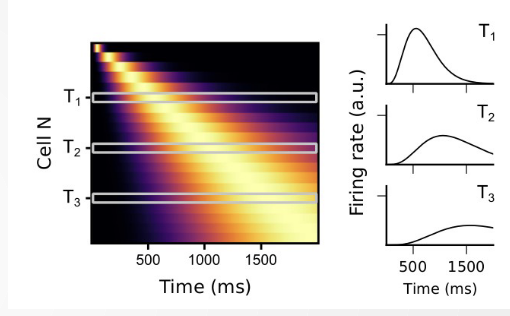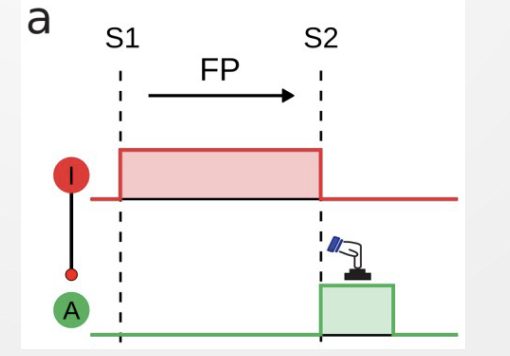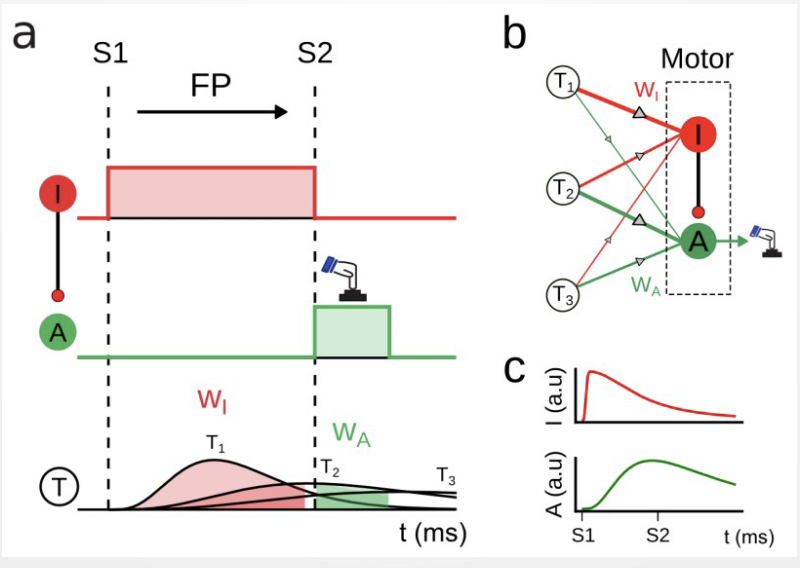Cognitive fMTP
- Preparation effects manifest in the motor system
- Preparation is a balance between inhibition and activation
- A neural representation of time
- A (crude) model of the motor system
- Hebbian associations + Forgetting & Retrieval
Between Fore and Start
- Timing
- Layer of time cells

- Preparation
- The motor system ‘stages’ a response, but holds it under inhibition..
- When the Go-stimulus (S2) arrives: activation

Learning
- Different ‘Time cells’ and ‘motor inhibiton & activation’ are active at the same time: this leads to hebbian learning
- Fire together, wire together
- Forms memory traces : aka chunk

Retrieval
- At the start, high degree of inhibition and low degree of activation
- If prev trial is short, inhibition short and more activation
- RT=AI
- More activation retrieved : faster
- Recency weighted
- Declarative Memory Blending
- Preparation := Ratio of retrieved I vs. A

Vs ACT-R
- Prepare for ‘the right moment’
- Moment-to-moment balance of I and A
- ‘the right moment’ is estimated based on time (pulses) and memory (DM)
- Similar; but memory ‘chunks’ contain I- and A-traces not a single moment at which one should be prepared
- If we are prepared→ benefit, else cost
- No active process during timing
- Continuously retrieving associated memories?
- Once we are prepared, it doesn’t ‘go away’
- Consequence of ‘more A, less I retrieved’



